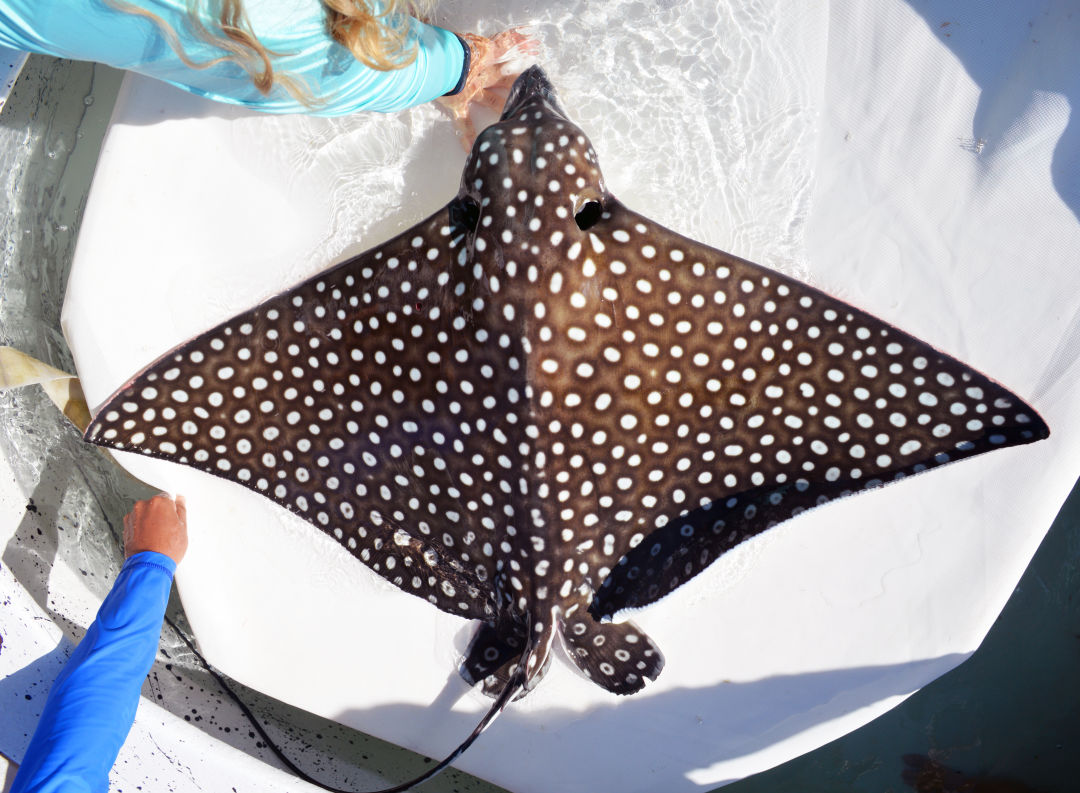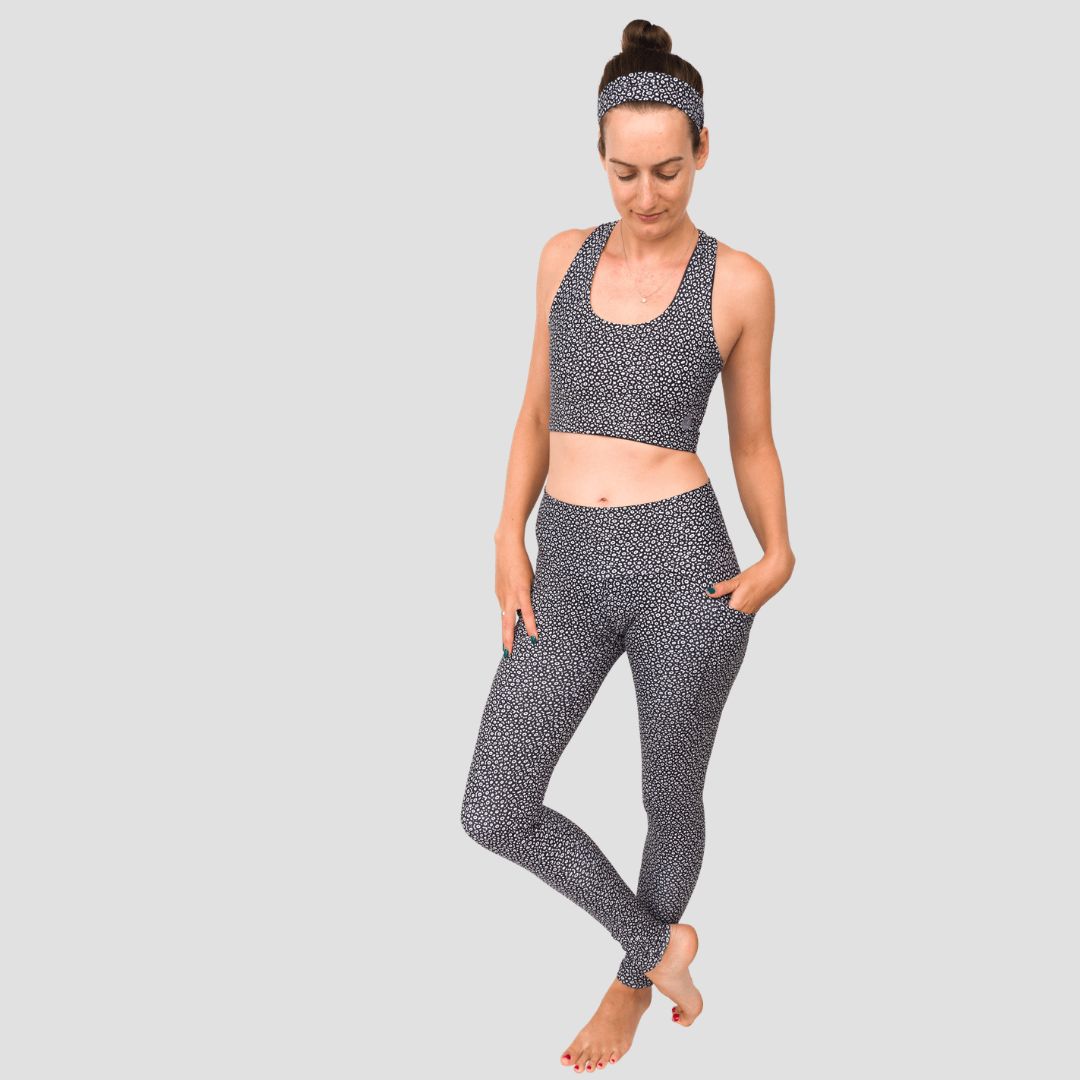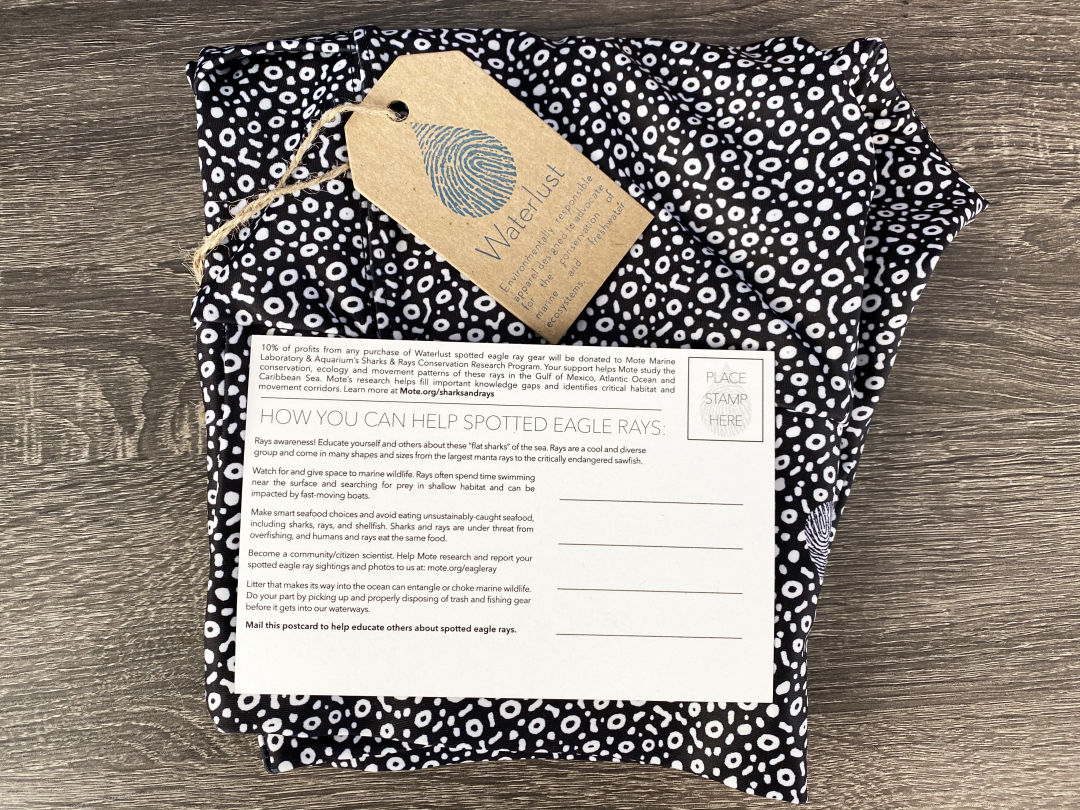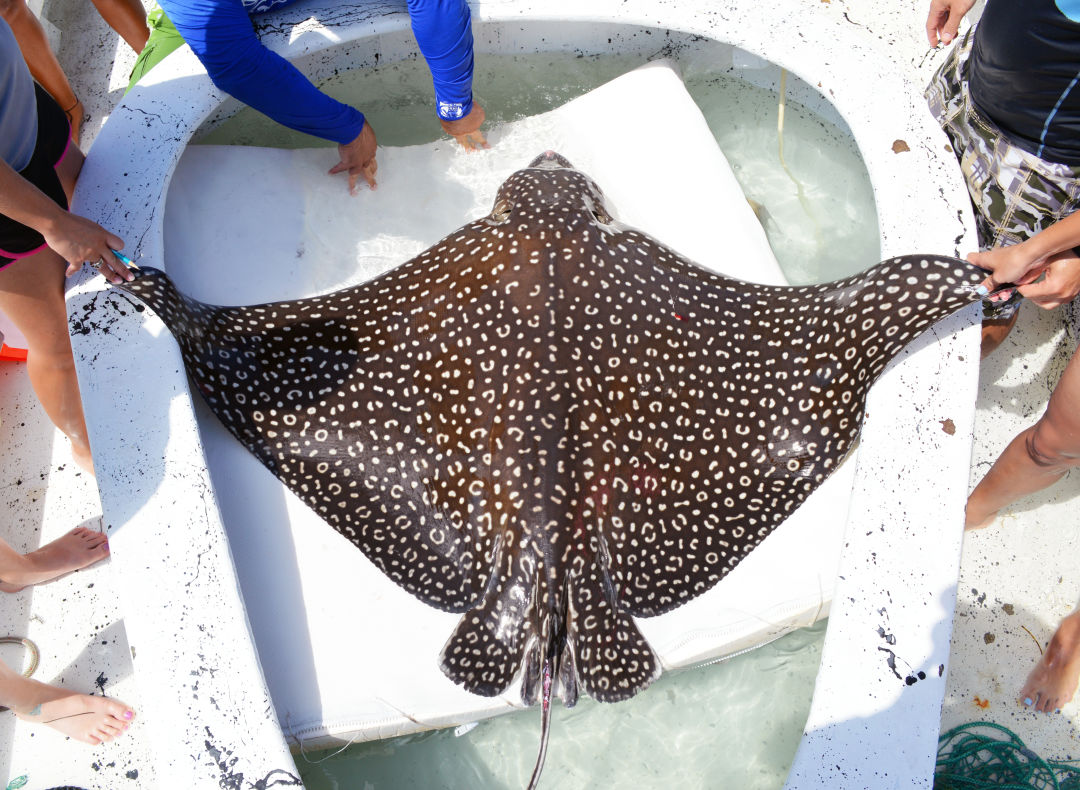Mote, Waterlust Partner to Create Eagle Ray-Themed Workout Gear

Mote Marine Laboratory and Aquarium scientists work with an eagle ray.
The spotted eagle ray is one of the most distinctive creatures in Sarasota Bay.
The animal’s white geometric pattern makes it impossible to miss as it glides through our azure waters. And much like a snowflake, each spotted eagle ray’s spots are unique.
Now, thanks to a new partnership, you can emulate the spotted eagle ray through your clothing. Science education and apparel company Waterlust recently teamed up with Mote Marine Laboratory and Aquarium to release a line of workout gear patterned to match the ray’s spots.
The apparel comes in three options: an exercise tank top ($45), 8-inch shorts ($49) and leggings with a customizable length ($69); there are also scrunchies and headbands available for $6. The gear boasts chlorine- and saltwater-resistant material with sun-protecting properties, so it can be worn while doing pretty much anything outside, whether that's swimming, running or biking. Better yet, 10 percent of the profits go straight to Mote’s Sharks and Rays conservation research program.

Waterlust apparel with the eagle ray pattern includes leggings, an exercise top and a headband, as well as a scrunchie and 8-inch shorts (not pictured).
Image: Courtesy Photo
For Waterlust, working with Mote was a “no-brainer,” says CEO Patrick Rynne. The Miami-based company initially started in 2011 as a way to bring science education to the masses. But Rynne, who has a Ph.D in marine physics, and his colleagues saw an opportunity to communicate scientists’ mission even further through apparel. Their designs pair research institutions with clothing that highlights the work they do and the biology they explore, from whale sharks to sockeye salmon.
Part of the challenge is choosing subjects that lend themselves to a distinctive aesthetic. For example, Waterlust’s creative team tinkered with a design for beluga whales, but they struggled to make it work. How do you translate the whale’s bright white color to an appealing pattern?
But spotted eagle rays made perfect sense. Close-up photographs of the rays show how intricate and specific their spots are. The spots take on different shapes, often forming a wide O of a circle, a tiny dot or sometimes even a formation that resembles a bone.

Each clothing purchase comes with a postcard explaining more about eagle rays and what makes them so special.
Image: Courtesy Photo
Each purchase of an item comes with an educational postcard about the rays and what makes them special. More than one quarter of the world’s rays are threatened with extinction “from targeted fisheries, bycatch and loss of habitat,” according to Waterlust's postcard.
Mote scientists Kim Bassos-Hull and Krystan Wilkinson see the Waterlust partnership as a unique way to spread the spotted eagle rays gospel to an unknowing audience. Most of the time, when Bassos-Hull or Wilkinson bring up spotted eagle rays, people give them a blank stare.
“If they have heard of a ray, they say, 'That’s the thing that killed Steve Irwin,'” Wilkinson says. That’s not exactly the reaction a scientist wants.
“We felt this was a unique opportunity to expand our reach to get people interested and excited and knowledgeable about rays," Wilkinson explains.

Like snowflakes, each eagle ray's pattern is completely unique.
In the meantime, Bassos-Hull and Wilkinson are studying the rays’ migration patterns. Much of the scientists’ understanding comes from acoustic tagging: tags implanted into the rays that give off an acoustic signal that registers on receivers along Florida’s waters.
And like humans, the spotted eagle rays are snowbirds of a type. In the winter months, some have traveled as far as the Florida Keys or Charlotte Harbor, while others go north to the Panhandle in the summer. And they’re sensitive to environmental conditions. When red tide arrived in Sarasota’s waters in 2018, researchers saw firsthand how spotted eagle rays sensed that and left.
The rays’ unique patterns also allow their spots to serve as an identifier. Citizen scientists who snap photographs of the rays while in the water or near the shore help researchers identify whether a ray has returned to an area. Scientists collect the data through a spotted eagle ray sighting form on Mote's website.
For those more interested in wearing the rays’ spots than seeking them out, there’s plenty of time to get your hands on some eco-friendly workout clothes. The Waterlust spotted eagle ray collection launched Sept. 22, and the company currently only sells their clothes online. They’ve also partnered with Mote on a second line, Sea Fan-atic, that supports Mote’s coral reef restoration program in the Florida Keys.
And the next time you’re out near Sarasota Bay, shade your eyes and try to see if you can spot an eagle ray. Scientists say they like to return to their old haunts.
“A lot of our rays have come back and have been detected on the same receivers in the previous summer and in the same areas,” Wilkinson said. “They are frequent visitors of Sarasota Bay.”



